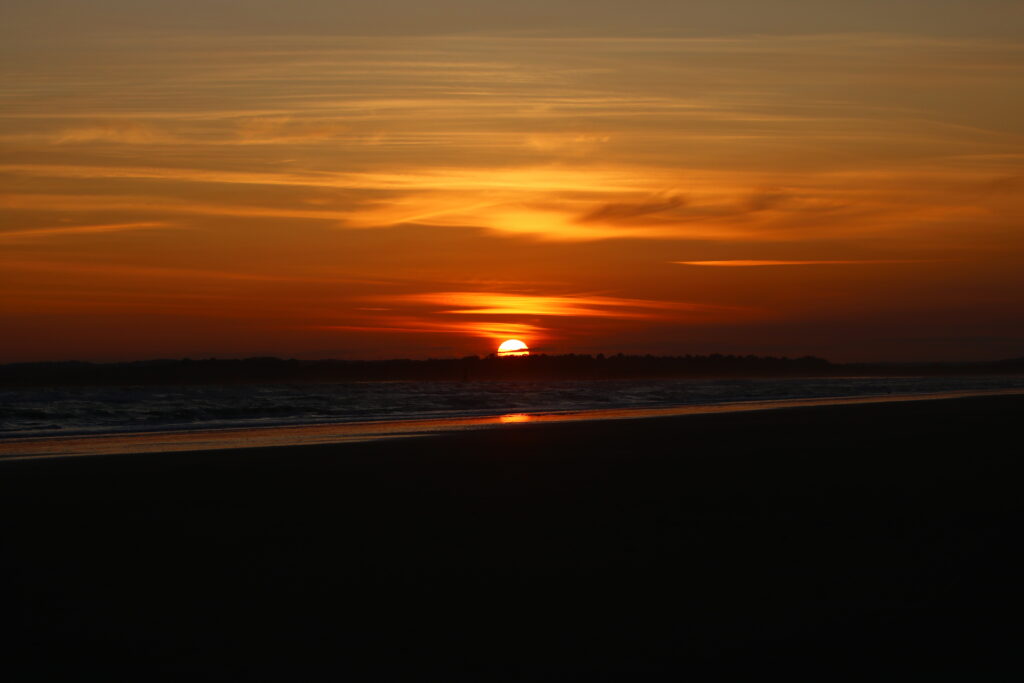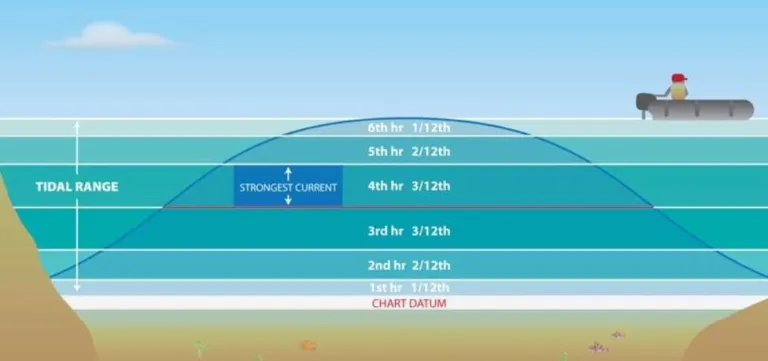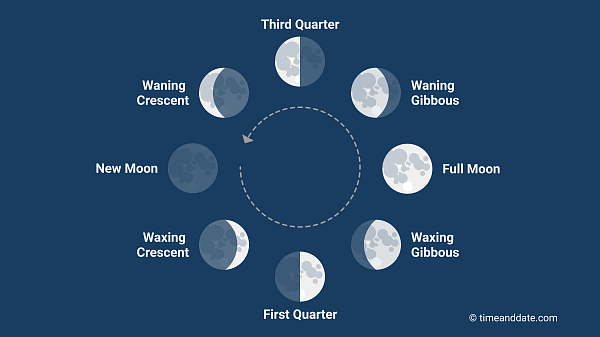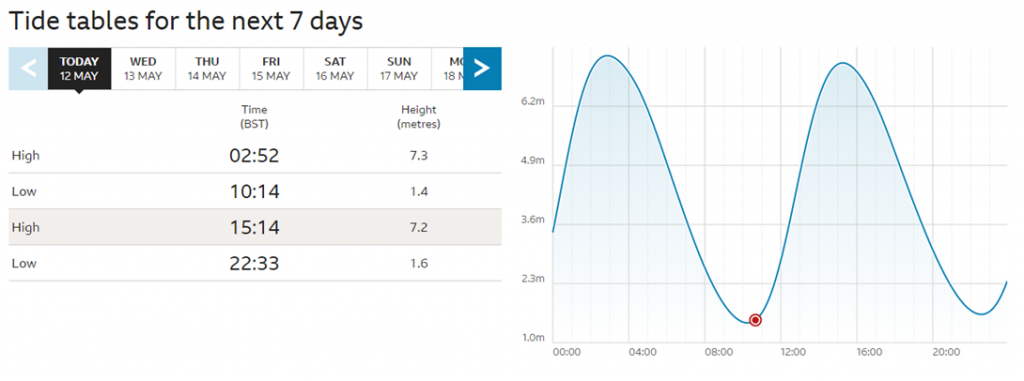
Since kitesurfing is (often!) done on the sea, tides affect the sport a lot. Understanding how they work and what that means for kitesurfing is an important element of staying safe. Tides affect different beaches in different ways, so it’s important not just to have a general understanding, but also to know how they affect kiting at the spot you’re visiting.
Table of Contents
Why do we have tides?
Every beach on Earth is tidal, though the effects are so small at some locations that we don’t notice them at all, or they don’t affect when we can kitesurf. Tides are created by the gravitational pull on the Earth from the moon, and by the centrifugal force of the Earth spinning on it’s axis. Because one side of the Earth faces the Moon, the sea on this side is closer to it, so the Moon’s gravitational pull causes a tidal bulge – the first high tide.
The second high tide is caused by Earth spinning on it’s axis. This centrifugal force, the same force that throws you off a roundabout as a child (or an adult – we won’t judge!), creates a tidal bulge on the opposite side of the Earth to the first tide.
The Earth’s land masses affect the tidal pattern also. In most places, the tide is semi-diurnal, which means there are two highs and two lows each day, with each being roughly the same height. However, there are some places where the land masses create a mixed semi-diurnal tide, where they are of varying heights, or a diurnal tide, where there is only one high and one low each day.
What Happens During the Tides?
There are roughly 6 hours between each high and low tide, and the times of each moves each day. The rule of twelfths shows us how much water is moving in each hour between high and low. If you sit on the beach and watch, you can see that in the first hour before and after a tide shift, the water does not rise or fall much. This is why (much to the frustration of kitesurfers!), the water is at a similar level to high tide for a long time.

Image taken from activeanglingnz.com
As you can see from the diagram, the largest volume of water moves during mid tide. This is when currents are strongest and the beach appears or disappears fastest, so it is important to stay aware at all times. At some locations, high tide may mean there is not enough space to safely launch or land your kite, or that there is a shore dump. It is important to ensure you know how the tide effects the spot you are kiting at.
Spring’s and Neap’s
During new and full moons, the sun, Earth and moon are in a straight line. During this time, the tidal forces of the sun and moon act together, meaning tides on Earth are both higher than the average at high tide and lower than the average at low tide. During the first and last quarter moon phases the sun and moon are at right angles to each other, so their tidal forces counteract each other, and tides on Earth are lower than average at high tide and higher than average at low tide.

Since we know the movements of the sun, Earth and moon, we can create tide charts years in advance. Three or four times a year, the spring tide occurs whilst the moon is in perigee (the closest it comes to Earth during it’s orbit). At this point, we get what is known as a perigean spring tide or ‘King Tide’, as the moon’s pull on the Earth’s seas is at its strongest.
Weather
The weather can also affect the tides; strong winds can push water on or offshore and slightly increase or decrease the tidal movements outside the predictions. High and low pressure systems can also affect it. For every millibar over standard pressure (1013mb) a system is, the tidal height is reduced by 1cm. Conversely, for every millibar lower than standard pressure a system is, the tidal height is increased by 1cm.
How Tides Affect Kitesurfing
Knowing how the tide affects kitesurfing at any spot you visit is vital. The first thing to make sure you know is the differences at each state. Whilst at some beaches it is possible to kite at high tide, at others there may be no space to safely launch and land without being too close too hazards. Because of the rule of twelfths that we discussed earlier; this may be the case for several hours of the day.
Camber Sands, our home beach, is not safe for kitesurfing from 5 hours around high tide. As the times of the tides moves each day, this can mean that high tide happens early morning and late night, so you can kite almost all day, but it can also mean that the high happens in the middle of the day, so you can only kite in the early morning or evening. There’s nothing more frustrating than turning up to a spot to realise you can’t get out for another four hours, so it’s important to check the tidal chart before setting out.
As well as meaning that it’s not possible to kite at all, different tidal states can bring new hazards or challenging conditions which may not be suited to lower level riders. It’s not just high tide that can be hazardous; shore dumps may be present at any point, making it necessary to upwind body drag until in a safer and easier place to board start. At low tide, it is possible that there may be hazards such as shipwrecks that are now above the water line, so it is necessary to stay well away from these at all times.
Different states may also create different conditions on the water, which can be both helpful and a hindrance. Sandbanks may create lagoons of flat water perfect for both beginners learning to board start and advanced riders trying wakestyle tricks. High tide may create waves perfect for boosting from or riding a surfboard.
Again due to the rule of twelfths, tidal state can change rapidly. Whilst it may seem that there is plenty of beach left, if it’s mid tide, it can disappear pretty quickly if it is on its way out and can also mean areas of shallow water on sandbanks appearing very quickly if the tide is on it’s way down. What was waist deep water 20 minutes ago can very quickly be ankle deep. It’s important to be able to check for areas of shallow water by noticing where the waves are bigger than they are in the surrounding area (part of your SHOE site assessment) to ensure you remain in at least waist deep water.
How to Read a Tide Chart

When looking at a tide chart in terms of kitesurfing, we need to take note of when each high and low tide is, and the size.
As we’ve discussed, it’s important to know what tidal states are safe for the beach you’re going to, so you’ll need to know how to tell at what time those will be. On a tide chart, they are normally shown in a wave pattern, with the peak being high and the trough being low. Most online charts will show a table next to the chart with the time of each high and low tide, but if not, simply check along the x-axis to see what time corresponds with the peak of the wave.
As you can see in the image above, the table on the left shows that high tides are at 2:52am and 3:14pm, which corresponds with the peak of the waves in the chart on the right. The y-axis shows the height from the datum (usually the lowest astronomical tidal point). In this example, the high in the afternoon is 7.2m, meaning the water will be 7.2 metres above datum. For kitesurfing purposes, it is important to know the height so you can see whether the water will be ‘up’ for longer. In some cases, if there is a large high tide and strong winds, those high tidal conditions can last for up to an hour longer than predicted.
